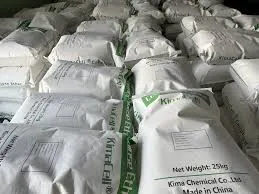
Dec . 05, 2024 14:07 Back to list
Exploring the Diverse Applications of Hydroxyethylcellulose in Various Industries
The Versatile Uses of Hydroxyethylcellulose
Hydroxyethylcellulose (HEC) is a non-ionic, water-soluble polymer derived from cellulose, a natural polymer. It has gained significant attention for its remarkable properties, including thickening, film-forming, and emulsifying capabilities, making it a valuable ingredient in various industries. This article will explore the diverse applications of hydroxyethylcellulose across multiple sectors, emphasizing its crucial role in enhancing product performance.
1. In the Cosmetic Industry
In cosmetics and personal care products, hydroxyethylcellulose serves as a thickening agent that modifies the viscosity of formulations. Its ability to form a gel-like structure when mixed with water allows it to stabilize creams, lotions, and shampoos. This contributes not only to the texture but also to the aesthetic appeal of the products. Moreover, HEC acts as a film-forming agent, enabling the creation of long-lasting effects in products such as hair gels and sunscreens. The compound's biocompatibility also ensures that it is safe for use on the skin, making it an ideal choice for sensitive skin formulations.
2. In the Pharmaceutical Industry
HEC is widely used in the pharmaceutical sector, particularly in the formulation of oral, topical, and parenteral products. Its thickening properties help in achieving the desired consistency for various types of medications, including syrups and gels. By modifying the release profile of active ingredients, hydroxyethylcellulose can enhance drug delivery and absorption, significantly improving therapeutic effectiveness. Additionally, its ability to form gels makes it an excellent candidate for use in ointments and creams, where it provides a smooth application and controlled release of medicinal compounds.
3. In the Food Industry
hydroxyethylcellulose uses

Hydroxyethylcellulose is also employed as a food additive due to its thickening and stabilizing properties. In various food products, it helps maintain texture and viscosity, enhancing mouthfeel and overall sensory quality. For instance, HEC is added to sauces, dressings, and bakery products to prevent separation and enhance the consistency. Additionally, it can serve as a fat replacer in low-fat food formulations, providing a creamy texture without the added calories. Its safety profile and approval for use in food applications further solidify its importance in this sector.
4. In Construction and Building Materials
In the construction industry, hydroxyethylcellulose plays a crucial role in improving the properties of cement-based materials, such as mortars and tile adhesives. As a thickener, it enhances workability and helps retain water, improving hydration and adhesion. This leads to better performance characteristics, including crack resistance and durability. Additionally, HEC can be used in joint compounds and coatings, providing smooth finishes and enhancing the overall quality of construction materials.
5. In the Oil and Gas Industry
Hydroxyethylcellulose is utilized in the oil and gas industry, specifically in drilling fluids and well completion operations. Its thickening properties help to suspend solids in water-based muds, ensuring proper drilling performance and preventing the loss of drilling fluid to the formations. The ability to formulate viscous solutions with HEC enhances the overall efficiency of drilling operations, contributing to better reservoir management and reduced operational costs.
Conclusion
Hydroxyethylcellulose is an essential ingredient across various industries due to its multifunctional properties. From cosmetics to pharmaceuticals, food products, construction materials, and the oil and gas sector, HEC proves its versatility and effectiveness in enhancing product performance. As industries continue to evolve and seek innovative solutions, the demand for hydroxyethylcellulose is likely to grow, solidifying its position as a valuable component in formulating high-quality products. Its safety, efficiency, and adaptability make it an indispensable asset in modern manufacturing practices.
-
What is HPMC?
NewsJun.06,2025
-
Understanding Redispersible Powder: The Future of Construction Materials
NewsJun.06,2025
-
Understanding RDP Powder: The Ultimate Solution for Your Construction Needs
NewsJun.06,2025
-
Pure HPMC: The Ideal Solution for Modern Construction and Building Materials
NewsJun.06,2025
-
Methyl Hydroxyethyl Cellulose: A Versatile Chemical Compound
NewsJun.06,2025
-
Hydroxyethyl Cellulose Power: The Essential Chemical for Various Industries
NewsJun.06,2025







